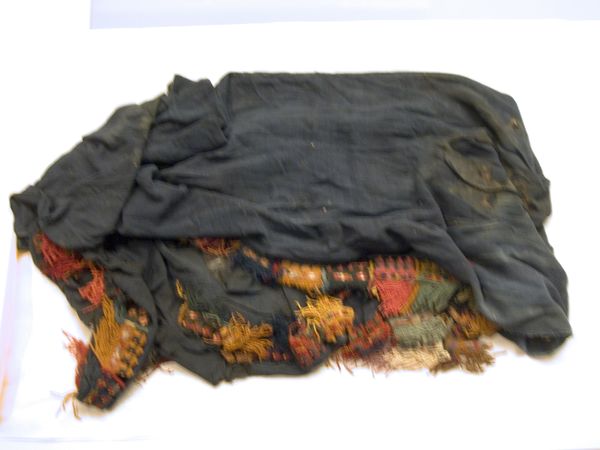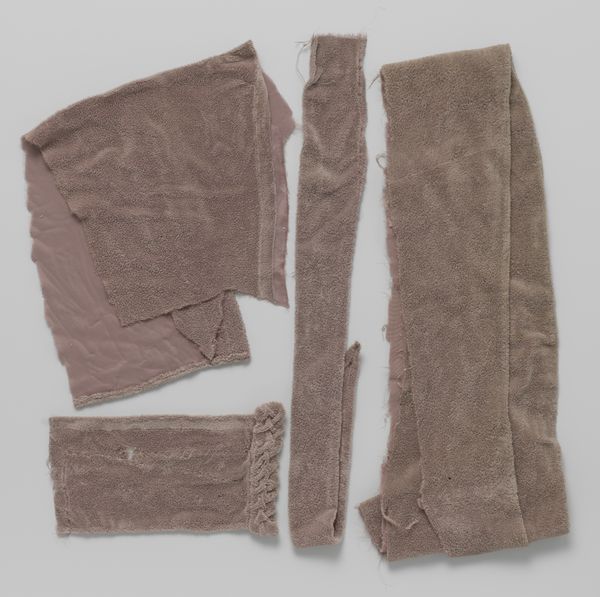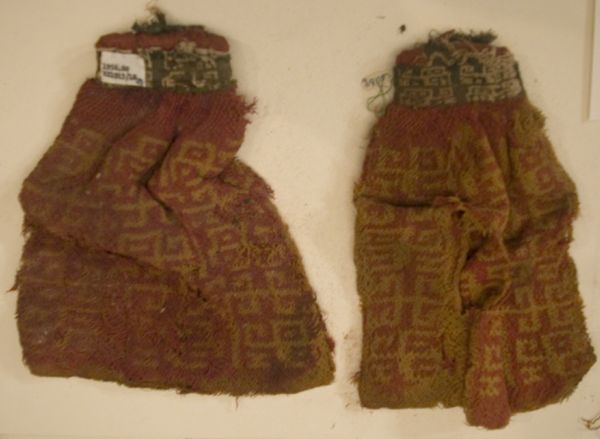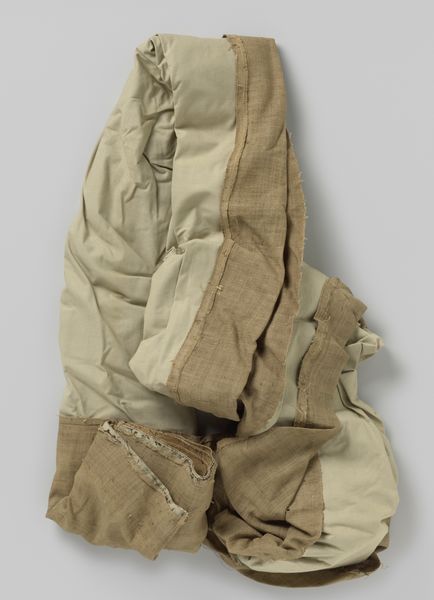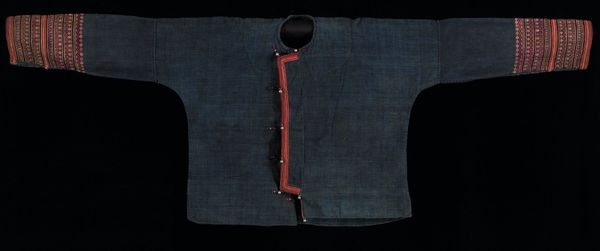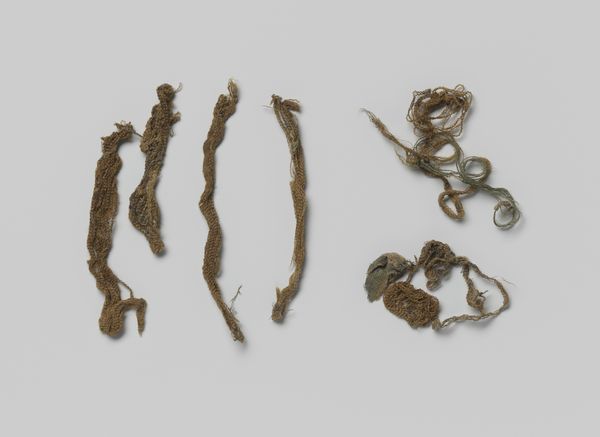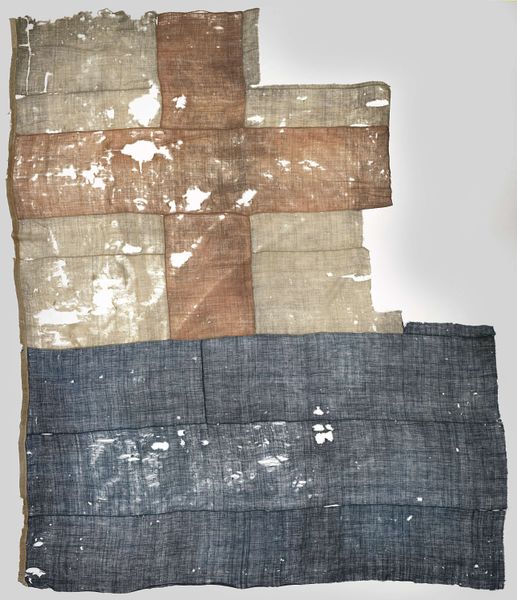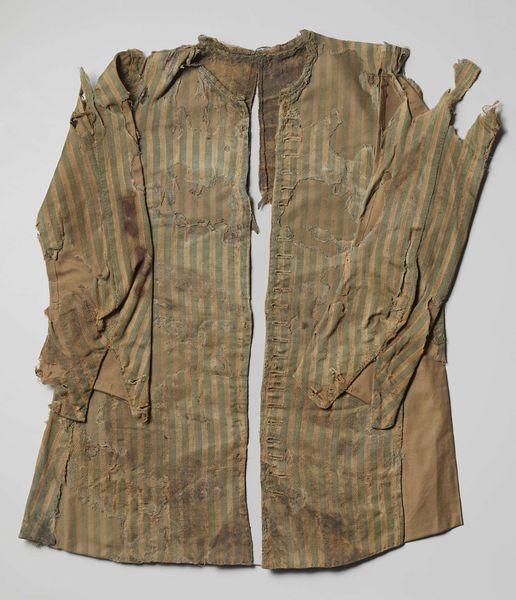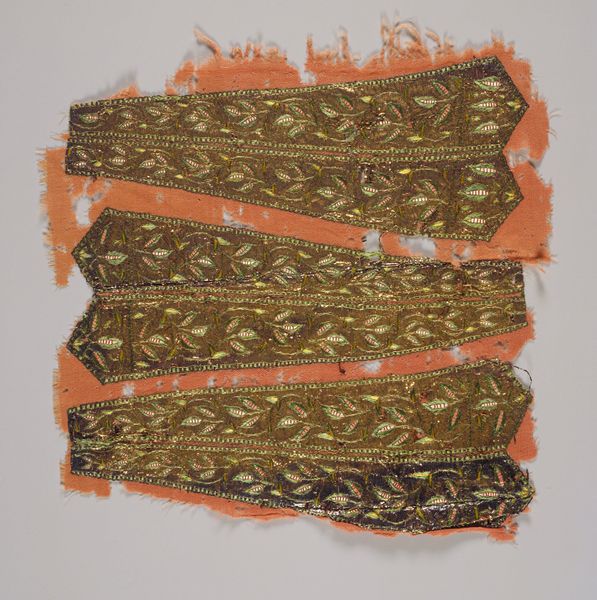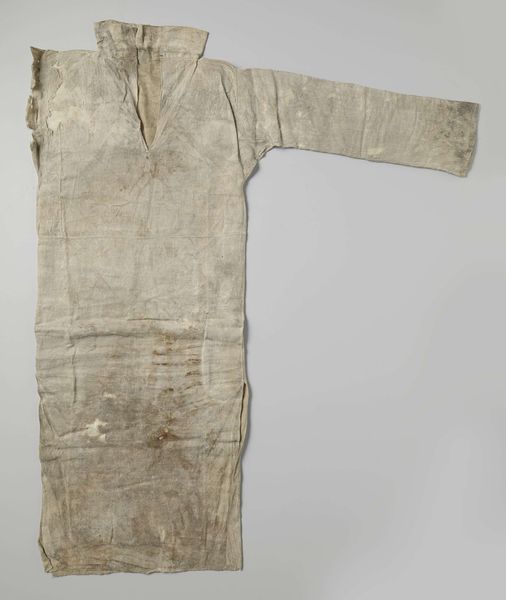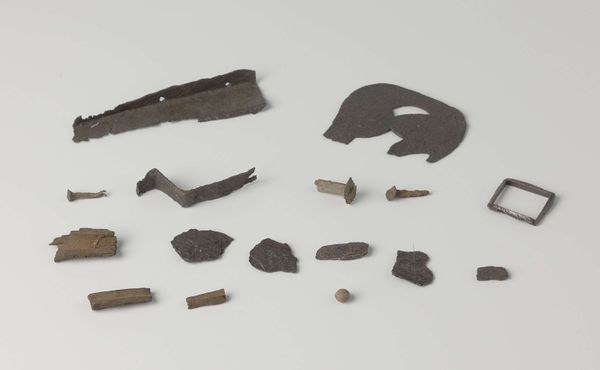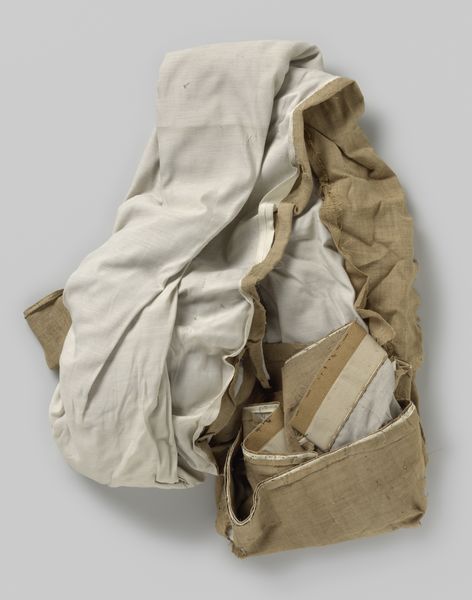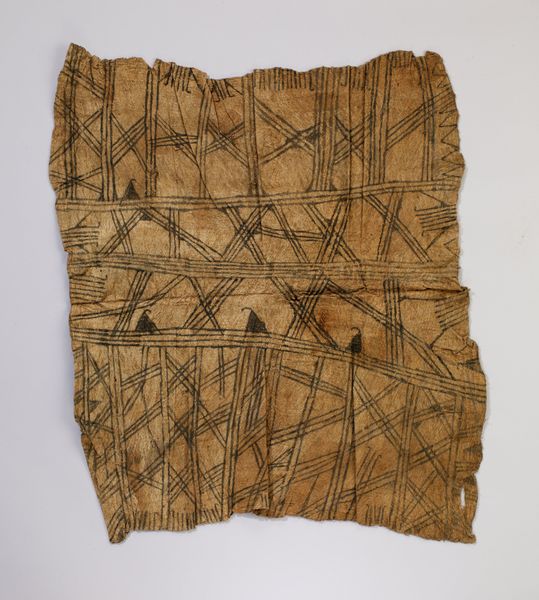
weaving, textile
#
weaving
#
textile
#
mixed media
#
indigenous-americas
Copyright: Public Domain
Curator: Editor: Okay, so this is a textile piece called "Mantle," dating from around 100-200 CE, created by the Nazca people. It’s currently housed at the Art Institute of Chicago. It appears to be made primarily of woven fabric. What strikes me is its fragmentary nature, the evident wear and tear… It speaks of time, doesn’t it? What can you tell me about it? Curator: Absolutely. Consider the materiality here. What raw materials would have been available to the Nazca? And how would they have transformed those raw materials into something durable, yet also beautiful? The weaving is not merely a functional act but a culturally and socially charged performance. Think of the labour, the skill, the embodied knowledge… how does that alter our perception of its function, and perhaps its original value? Editor: It definitely makes you think about the resources available to the Nazca people back then. Would this “Mantle” have been particularly valuable, or a more everyday item, even given its condition today? I guess what I’m getting at is who might have made it and what they used it for. Curator: The degree of craftsmanship does suggest this wasn't an everyday throw, but maybe connected to status or ritual. Nazca textiles held deep cultural meaning; they could depict mythological figures, social narratives or cosmic order. Now, imagine the makers: the dyers carefully extracting pigments from plants or insects, the weavers interlacing threads with intricate designs… the finished product wasn’t just material, but held the collective labour and knowledge of a whole community. Editor: So seeing the piece like this, knowing it as more than just old cloth, that really shifts my perspective. I’m now considering all those hidden stories woven in. Curator: Exactly. Its "fragmentary nature," as you initially noted, only heightens the sense of loss but also makes the viewer question the social, economic, and historical conditions that might have created its destruction. This piece, like others, opens pathways to understand not only ancient cultures, but our own relationship to production, materiality, and time.
Comments
No comments
Be the first to comment and join the conversation on the ultimate creative platform.
